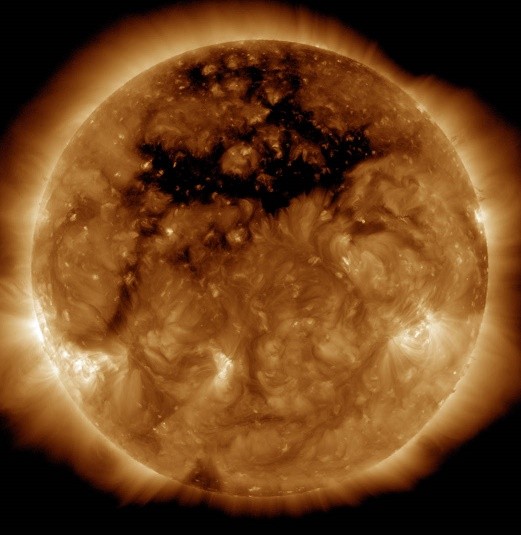NASA captured a gigantic, gaping "hole" on the sun that is estimated to be as wide as 50 Earths and is apparently releasing some powerful emissions into space.
NASA's Solar Dynamics Observatory spotted this event where the image reveals a strangely beautiful and terrifying sight, but scientists are quick to reassure the public that Earth is not in danger.
This NASA image was taken on October 10 via ultraviolet wavelengths which reveals a large black gap that is stretching across the northern polar region of the star, known as a coronal hole. The dark regions that pockmark the outermost layer of the sun are called coronas which appear when the solar magnetic field are moving away from one area to another, opening up to interplanetary space.
Apparently these holes are regions in which the coronas are darker in color and even have lower temperatures. They also possess low density plasmas due to lower energy and gas levels, making it appear darker than its surroundings.
Since the magnetic field is exposed to interstellar space, solar particles that make up solar winds escape into deep space at incredible speeds of up to 500 miles every second.
Now, these solar winds are now crashing into Earth's atmosphere where Aurora Borealis occur or Northern Lights, releasing bright colors into the night sky caused by radiation. This has no immediate threat to humans, however, solar winds can cause damage and disrupt satellite and radio communications.
According to the NOAA Space Weather Prediction Center, this solar storm is categorized into a G1-Minor storm that spans from October 14 to 16 where auroras were visible though out Pennsylvania, Iowa and Oregon.
Scientists also assure that coronal holes on the sun are normal events and they often appear when solar activity is less active during the sun's 11 year cycle.



























